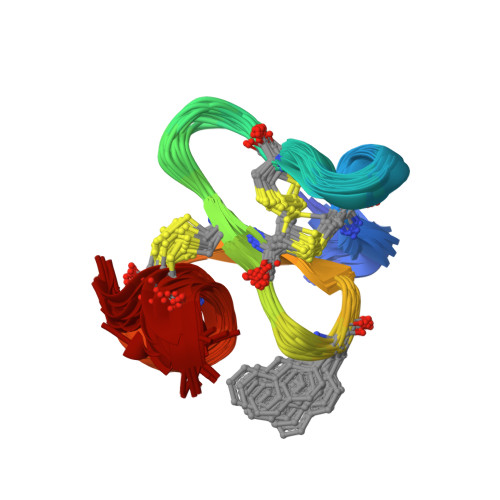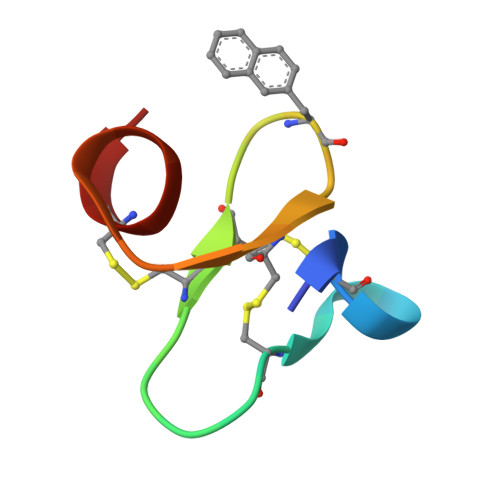On the Importance of Carbohydrate-Aromatic Interactions for the Molecular Recognition of Oligosaccharides by Proteins: NMR Studies of the Structure and Binding Affinity of AcAMP2-like Peptides with Non-Natural Naphthyl and Fluoroaromatic Residues.
Chavez, M.I., Andreu, C., Vidal, P., Aboitiz, N., Freire, F., Groves, P., Asensio, J.L., Asensio, G., Muraki, M., Canada, F.J., Jimenez-Barbero, J.(2005) Chemistry 11: 7060-7074
- PubMed: 16220560
- DOI: https://doi.org/10.1002/chem.200500367
- Primary Citation of Related Structures:
1ZNT, 1ZUV, 1ZWU - PubMed Abstract:
The specific interaction of a variety of modified hevein domains to chitooligosaccharides has been studied by NMR spectroscopy in order to assess the importance of aromatic-carbohydrate interactions for the molecular recognition of neutral sugars. These mutant AcAMP2-like peptides, which have 4-fluoro-phenylalanine, tryptophan, or 2-naphthylalanine at the key interacting positions, have been prepared by solid-phase synthesis. Their three-dimensional structures, when bound to the chitin-derived trisaccharide, have been deduced by NMR spectroscopy. By using DYANA and restrained molecular dynamics simulations with the AMBER 5.0 force field, the three-dimensional structures of the protein-sugar complexes have been obtained. The thermodynamic analysis of the interactions that occur upon complex formation have also been carried out. Regarding binding affinity, the obtained data have permitted the deduction that the larger the aromatic group, the higher the association constant and the binding enthalpy. In all cases, entropy opposes binding. In contrast, deactivation of the aromatic rings by attaching fluorine atoms decreases the binding affinity, with a concomitant decrease in enthalpy. The role of the chemical nature of the aromatic ring for establishing sugar contacts has been thus evaluated.
Organizational Affiliation:
Department of Protein Structure and Function, Centro de Investigaciones Biológicas, CSIC, Ramiro de Maeztu 9, 28040 Madrid, Spain.



















